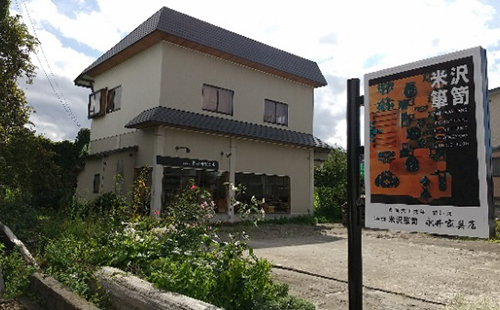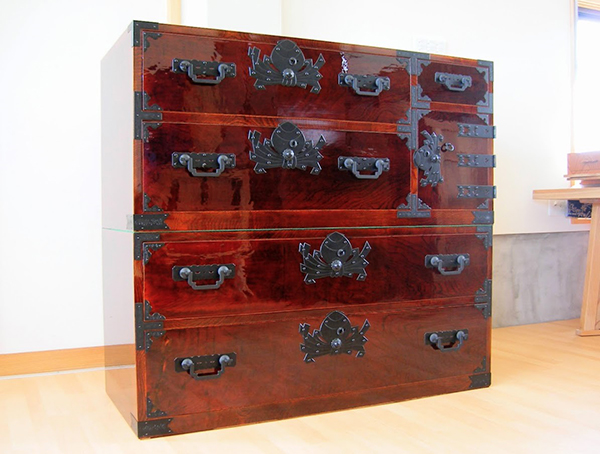


Company Name
Nagai Kaguten (Nagai Furniture Store)
Year of establishment
Mar. 2nd, 1912
Type of industry
Manufacturing, sales of furniture
Main products
YONEZAWA TANSU, Japanese style furniture
Post code
992-0052
Company address
2-47 2-chome Marunouchi Yonezawa Yamagata Japan
Representative
Shinjiro Nagai
Person in charge
Shinjiro Nagai
T E L
+81-(0)238-24-1777
F A X
+81-(0)238-24-5120
Main selling channels
info@nagaikaguten.jp https://nagaikaguten.jp/ In-house shop, Domestic EC site
EC sales results
Domestic EC site
Available language
Japanese
Since 1912, our company has been in the business of producing traditional Japanese furniture and traditional Yonezawa tansu (a type of chest of drawers, an example of which was on display at the World Expo Osaka 1970 craft pavilion entrance). As Yonezawa's sole surviving Yonezawa tansu maker, the company received recognition from the local government in 2006 for its contribution to the preservation of traditional craft skills. Yonezawa tansu production began over 400 years ago as a winter job for builders. Made from zelkova, chestnut, and other solid woods, the chests are finished with lacquer and embellished with hand-forged hardware often featuring decorative motifs such as cherry blossoms and butterflies, which make them both practical and decorative. Yonezawa tansu are recognized as one of the country's traditional crafts. It is also believed to be the origin of chest-making traditions in other parts of the country, such as Sendai tansu and Iwate's Iwayado tansu. One of the decorative motifs that often feature in Yonezawa tansu hardware is the swallowtail butterfly. This motif closely resembles the family crest of the Taira clan, a prominent 12th century military and political power. Yanazawa, a remote district of Yonezawa, is recorded to have harbored Taira clan members lost in battle. Therefore, it is believed that this design was originally commissioned by these clan members, and it later became widely used for Yonezawa tansu hardware.
Made from high-quality wood
The wood used for the production of our Yonezawa tansu is air-dried for at least five years, some for over fifteen years. Exposing wood to the elements rids it of sap and other moisture, preventing it from warping after it is made into products. We buy our wood as logs, which after being processed into lumber are stacked into piles. Stack upon stack can be seen outside our workshop. Thorough seasoning alone does not guarantee a warp-free, beautiful finish, however. Vitally important for achieving a quality product is the selection of good wood, and the successful processing of wood into lumber. We choose a type of elm known as yamanire, typically over 400 years old and preferably from a remote, rocky terrain, where harsh environmental conditions has made the wood strong.
Made with attention to detail
Our Yonezawa tansu are made carefully with great attention to detail, so that we can preserve for posterity this unique legacy inherited from our predecessors. We also maintain quality standards so as to meet the expectations of our customers, who have used Yonezawa tansu for many generations.

Yonezawa Tansu, Kuruma Tansu, Karato

Yonezawa Tansu, Clothing Tansu

Yonezawa Tansu, Clothing tansu, red-lacquered

Yonezawa Tansu, Kaidan (Stairs) Tansu,red-lacquered
-1.png)
Yonezawa Tansu small red-lacquered temoto tansu
.png)
Yonezawa Tansu, Clothing tansu, red-lacquered (upper)
.png)
Yonezawa Tansu, Clothing tansu, red-lacquered (lower)